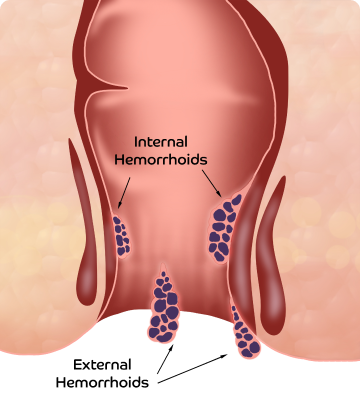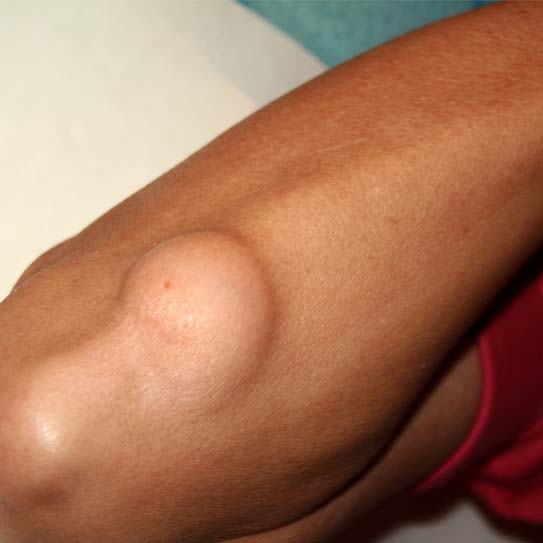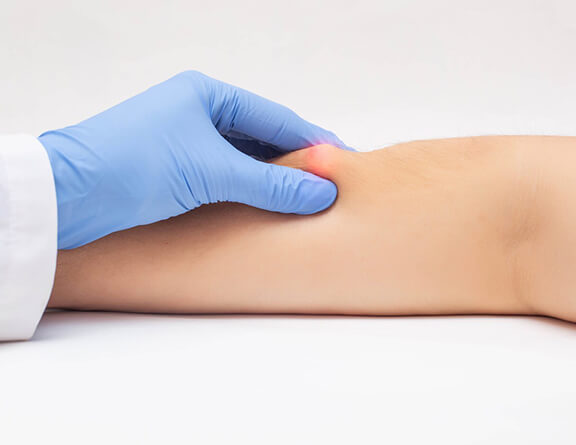Contact Pristyn Care to Undergo Lipoma Excision Surgery in Muzaffarnagar
Lipomas are a very common problem that is often left untreated if they don’t cause any problem. However, not everyone thinks like that. In some cases, lipomas appear in regions like around the face, neck, arms, thighs, or hips, where they can be aesthetically unappealing and may also cause discomfort. Some people actually suffer from pain due to large-sized lipomas that are present above the blood vessels.
Regardless of the reason you are seeking treatment for lipoma, it is the best decision you can make. Leaving a lipoma untreated can be problematic as sometimes, the lump present under the skin is actually liposarcoma which is cancerous in nature. Therefore, you should always get proper treatment for lipomas.
Get Rid of Fatty Lumps Permanently with the Help of Pristyn Care Doctors
The success rate of any surgery primarily depends on the surgeon. Pristyn Care understands the value of having a reliable and experienced surgeon so that the patient can relax and feel safe under their care. That’s why we house the best team of plastic surgeons in Muzaffarnagar who are well-trained and have expertise in minimally invasive procedures, such as lipoma excision surgery.
The doctor will diagnose you to determine the severity of the condition and utilize the best method for lipoma removal. They are aware of the risks and also skilled enough to mitigate them properly, thereby improving the chances of success. You can contact our plastic surgeons any time pre and post-surgery for consultation and they will clear all your doubts and concerns to ensure that you make the right decision.
Different Types of Lipomas
Typically, all lipomas are composed of fat tissues. However, in some cases, the lump may consist of blood vessels and other tissues as well. Based on this, lipomas are classified into the following types:
- Angiolipoma– Contains fat and blood vessels and also causes pain.
- Conventional Lipoma- Contains white fat cells that store energy.
- Fibrolipoma– Consists of fat and fibrous tissue.
- Hibernoma– Consists of brown fat that are responsible for generating heat and helps to regulate body temperature.
- Myelolipoma– This type of lipoma contains fat and tissues that contain blood cells.
- Spindle Cell Lipoma- They have a spindle-like shape of the fat cells.
- Pleomorphic– This type of lipoma has fat cells of different shapes and sizes.
- Adenolipoma– A new variant of superficial lipoma in which eccrine sweat glands are present with fatty tumors.
All these types of lipoma are non-cancerous. However, some of them may cause pain and discomfort due to the composition. Therefore, it is crucial that you get the lipoma diagnosed and get proper treatment for it.
What is lipomatosis?
Lipomatosis, also known as hereditary multiple lipomatosis, is a medical condition due in which multiple lipomas start to form in different parts of the body, such as the neck, head, shoulders, back, thigh, etc. This autosomal dominant condition is characterized by the appearance of symmetric lipomas, typically in the extremities and trunk region.
Lipomatosis is also associated with Gardner’s syndrome and Madelung’s disease. The treatment method for single lipoma and multiple lipomas is the same. The fatty lump is excised carefully and the patient is asked to take certain precautions to prevent the formation of these fatty lumps.
What are the side effects of lipoma removal surgery?
Though the lipoma removal procedure is safe and minimally invasive, there are still possibilities that you will experience some side effects from the surgery. The common side effects include:
- Bruising– Immediately after the surgery, there will be bruises around the site from where the fatty lump is removed.
- Swelling– The swelling in the region where the lump existed will be swollen for a week or so. The swelling will subside gradually as the wound heals.
- Infection– There is a possibility that the internal organs may come in contact with external contaminants and cause infection. Even the wound can get infected if it gets wet.
- Injury to the Nearby Structures– In some situations, it is possible that lipoma is present directly over an organ. Hence, during the surgery, the nerves, tissues, or the organ itself may get damaged during the procedure.
- Hematoma Formation- Another side effect of lipoma surgery is blood clot formation. If the wall of a blood vessel is injured during lipoma removal, blood clots may start to form outside the vessel into the surrounding tissue.
- Excessive Scarring- In rare instances, lipoma treatment may leave major scars on the body. It usually happens when the size of the lipoma is big and its removal is difficult.
- Seroma– Another side effect of lipoma surgery is the collection of fluid, i.e., blood plasma and inflammatory fluid that is produced by the injured cells. Early or improper removal of stitches can also cause seroma sometimes.
Recovery Tips After Lipoma Surgery
Immediately after the surgery, you will be asked to take complete bed rest for at least 24 hours. The doctor will also prescribe some pain medicine and NSAIDs to reduce your pain, swelling, and fever and also minimize the chances of infection. Before discharge, the doctor will prepare a complete recovery guide that will include self-care tips, precautions, dos, and don’ts as well.
- Do not let the incisions get wet. Avoid taking baths or getting in hot tubs for at least 4 weeks.
- Wash the incision with soap and warm water. Dry the wound and put on new clean bandages. This will prevent the wound from getting infected.
- Apply ice over the wound for the next few days after surgery to reduce the swelling.
- Do not indulge in physical activities, especially lifting heavy weights, as they can tear up the stitches.
- Avoid driving for the next few days until approved by the doctor.
- Eat a normal diet that consists of healthy and nutritious items, including fruits, vegetables, and whole grains.
If you notice some signs of post-surgery complications, such as excessive bleeding from the wound, persistent swelling, nausea, vomiting, high fever, etc., contact your healthcare provider right away.









.svg)









